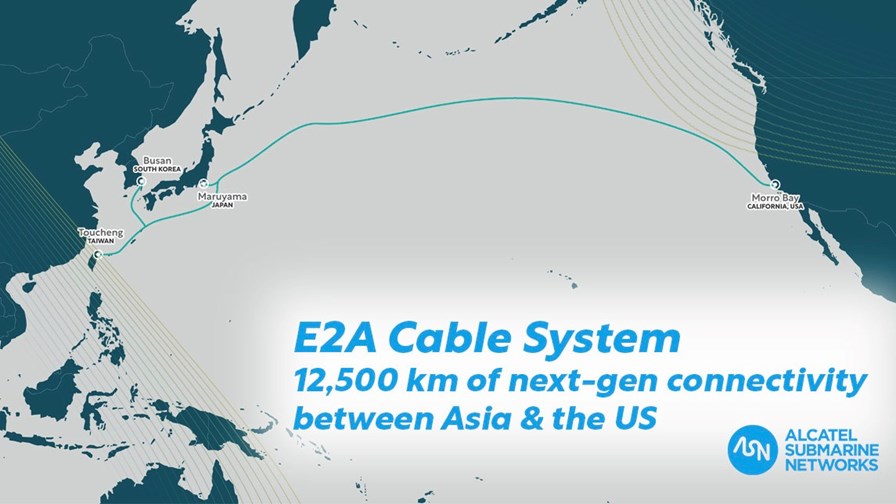
- Submarine networks are increasingly important for telco strategies
- New subsea cable builds are being planned to support data traffic demand and provide operational resiliency
- SoftBank, SK Broadband, Chunghwa Telecom and Verizon have joined forces to build the E2A cable that will connect Taiwan, South Korea, Japan and the US
Four major telcos have joined forces to fund, build and use a new 12,500km transpacific submarine network dubbed E2A that will connect Taiwan, South Korea, Japan and the US.
Chunghwa Telecom (Taiwan), SK Broadband (a subsidiary of South Korea’s SK Telecom), SoftBank Corp (Japan) and Verizon Business (US) formed the E2A consortium at a signing ceremony, which was held in Seoul on 21 March. The network is expected to be ready for commercial service by the second half of 2028. Chunghwa Telecom noted in a statement to the Taiwan stock exchange that it will invest at least 4.6bn Taiwan new dollars ($139m) in the network, but no other financial information about levels of investment or ownership stakes in the cable were shared.
Alcatel Submarine Networks (ASN), now a French state-owned company, will build the subsea network, which will comprise 12 fibre pairs with a total potential capacity of more than 192 Tbit/s and have landing points at Toucheng (Taiwan), Busan (South Korea), Maruyama (Chiba, Japan), and Morro Bay (California, US).
The cable will play an important role in supporting the increasing volumes of data traffic flowing between datacentres in Asia and the US (especially as the use of AI continues to grow) and in providing additional network resiliency to the operators as they seek to ensure they are not hampered by operational, physical (including cut cables) or other disruptions.
“Chunghwa Telecom will continue to enhance its resilient network infrastructure by integrating submarine cables, fibre optics, mobile communications, satellites, and microwave technologies – forming a comprehensive ‘sea, land, sky, and space’ network,” noted the Taiwan operator’s chairman Chih-Cheng Chien. “Leveraging Taiwan’s strategic position as an Asia-Pacific information hub, we aim to attract international operators to establish a presence in Taiwan, further advancing AI-driven innovations and co-creation services to meet the evolving needs of our customers,” he added.
Chunghwa Telecom is also currently investing in the pan-Asia Apricot subsea cable that will run from Singapore to Japan with branches that connect to Indonesia, the Philippines, Guam and Taiwan: Chunghwa noted that E2A will “soon be able to interconnect with other upcoming cables, such as SJC2 and Apricot, in Taiwan, enabling diverse connectivity options”.
In Japan, the E2A cable will hit the shore at SoftBank’s Maruyama Landing Station in Minamiboso-City, Chiba Prefecture. According to the Japanese operator, the landing station serves as a landing point for numerous submarine cables, including the Jupiter transpacific cable that began operations in August 2020, and the Asia Direct Cable (ADC), which commenced operations in December 2024.
Teruyuki Oya, head of the Mobile & Network Division for the Technology Unit at SoftBank Corp, stated: “As we enter an era where AI is being fully implemented, the importance of international submarine cables connecting not only Japan and the United States but also major parts of Asia as arteries of information is increasing. SoftBank will advance the development of global, multifaceted, and stable platforms by building infrastructure for the AI era.”
- Ray Le Maistre, Editorial Director, TelecomTV
Email Newsletters
Sign up to receive TelecomTV's top news and videos, plus exclusive subscriber-only content direct to your inbox.
Subscribe